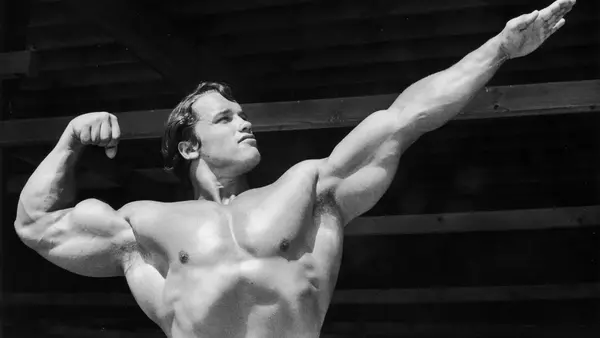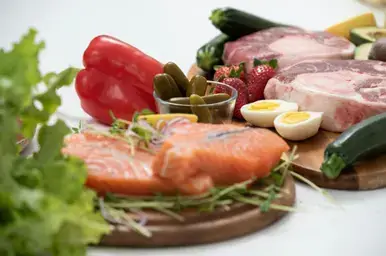
Every person in the gym dreams of having massive biceps like Arnold Schwarzenegger.
Who wouldn’t like those huge guns that bust your sleeves and make the ladies (and your Gym Bros) swoon? If you ask me, I’d say big arms are the only practical solution to world peace (I’m kidding…. partly). It wouldn’t be an exaggeration to say that big arms are pretty impressive.
But “How do I build huge biceps?” is a timeless question that plagues every beginner.
Don’t worry…. I’m here to help you build huge biceps….
Getting Started
Before I tell you how to build huge biceps, it’s important to know what ‘building huge biceps’ means exactly. In simple terms, it means that you increase the size of your biceps. But you want this growth in size to come from muscle mass. Increased muscle mass gives it the aesthetic and thick look that everyone loves.
So to build biceps, you have to train it with weights and provide it proper nutrition and rest. That’s it.
So here’s what you do:
Step-1: Eat in a Caloric Surplus
Caloric Surplus means you eat more than what is required by your body to maintain its current physical state. Your biceps are gonna need food to grow.
1. How much more should I eat?
A moderate surplus of 150 to 300 calories is enough. You don’t need more than that. Any more than that will lead to excess fat gains, and trust me, we don’t want that. A little fat gain is to be expected in a surplus, don’t worry about that. Our goal is to cut the amount of “unnecessary” fat gain and maximize the amount of muscle mass gain.
According to this study by Dr. Eric Helms (a pioneer in the Evidence-based fitness world), there’s no difference between muscle growth achieved by a 5% (moderate) surplus and a 15% surplus (High). But the 15% surplus led to an increase in fat gains.
2. What should I eat?
You can create this surplus from either carbohydrates or fats. It’s completely up to your personal preference.
Step-2: Eat Enough Protein
Protein is necessary to build muscle. So, you should eat enough protein to make your biceps grow.
1. How much protein is enough?
Around 0.8 grams of protein per pound of body weight is enough. (That’s 1.6 grams of protein per KG of body weight for my Metric System People)
Example: So if you weigh 180 lbs, then your protein intake would be – 180 x 0.8 = 144 grams
Example: If you weigh 90 Kgs, then your protein intake would be – 90 x 1.6 = 144 grams
Check out this Meta-Analysis and Systematic Review by Dr. Brad Schoenfeld. It concludes that a protein intake greater than 1.6 grams per doesn’t grow more muscle. So, we’ll stick to this number.
Why do more when we can get the same results with less?
2. Protein Sources
It’s better to get your protein from quality sources such as lean meats, whey protein, eggs, plant protein, etc.

Step-3: Train with Heavy Weights as well as Lighter Weights
You might have seen a lot of people in the gym swinging around heavy weights. They scream and shout but barely move the weight.
Why do they do that? Simply because someone told them to ‘Go hard or Go home’.
Well lucky for you, you have me to give you better advice (I know you’re thankful).
1. So, how heavy should you lift?
If you’re training with sufficient intensity, then you can build significant muscle from both – Heavy as well as lighter weights (i.e. 30 to 90% of your 1 Rep Max).
You don’t have to choose between the two. Use both to maximize your gains. Check out this Meta-Analysis and Systematic Review. It states that a wide range of weights can be used for muscle growth.
Check out this Meta-Analysis and Systematic Review by Dr. Brad Schoenfeld too. It states that muscle hypertrophy (growth) can be equally achieved across a spectrum of loading ranges.

Step-4: Train with a variety of Rep Ranges
Since you can train with a wide range of weights, this allows you to train with a wide range of repetitions (reps) too.
Generally, reps between 5 to 30 range will build muscle (if the set is taken close to failure). So, you should use lower rep ranges (5 to 15) as well as higher rep ranges (16 to 30) for maximum muscle growth. Mix it up a little!
Step 5 – Train with Enough Volume
Simply put, ‘training volume’ means the number of sets you’re doing for a muscle in a week.
1. How many sets should you do?
There’s a dose-related response when it comes to training volume. It means that the more sets you do, the more you grow (yes, these are hard intense sets, taken close to failure).
Check out this Meta-Analysis & Systematic Review by Dr. Brad Schoenfeld which concludes the dose-related response.

2. So should you do as many sets as you can?
Not quite. Even if there’s a dose-related response, it doesn’t mean that the more you do the better. That’s because you also have to think about recovery. Your muscles can only recover from a certain amount of weekly sets. The recovery capacity also differs from person to person.
Some muscles like delts, forearms, calves, etc. are quick to recover. Other larger muscles take longer to recover i.e. 24 to 72 hours.
So, based on the recovery, you can determine your own volume for each muscle. That means you should do as many sets as you can safely recover from.
3. Just give me a number damn it!
Geez….fine (you’re no fun at all). For an average person, this number falls somewhere between 10 to 20 sets per week. Start with 6 to 8 sets per week for a muscle and adjust from there.
Check out this Systematic Review to learn more
If you’re recovering well before your next session, try adding a set. If you’re not recovering on time, then try reducing a set. Listen to your body.
Bonus Tips
Did you think I was going to leave you with just 5 tips? Haha….nope. There’s always more to learn!!
1. Exercise Selection:
Make sure to choose 2-3 exercises that hit your biceps hard. Stick with those exercises for some time (at least 8 to 10 weeks). You don’t need to change your exercises that often. Pick exercises that fulfill the following criteria.
a. Great Mind-Muscle Connection
b. Great Pumps
c. Easy to Progress in weight
d. Doesn’t Fatigue you excessively (fatigue isn’t a big deal when training your biceps, because it’s a smaller muscle)
Here are a few of my favorites:
- Incline Dumbbell Curl
- Cable Curls
- Bayesian Curls
2. Progressive Overload:
1. Progressive overload means beating your last session’s performance. You can do it by increasing reps, sets, or weight.
2. Remember, as a beginner, you’ll find it easy to outperform your last session initially. But as you get more experienced, it will be hard to outperform your last performance every week.
3. So, if you can’t outperform your last session, you should try to at least match it.
3. Recovery:
Pay attention to your recovery. Sleep is just as important as nutrition and training. A 7 to 9 hours of good night’s sleep will do wonders for your muscles in the long run. (There, I just gave you another excuse to stay in bed for longer…you’re welcome)
4. Consistency:
Consistency is a major factor when it comes to muscle growth. Once you have all the basics down, all you have to do is execute. You should stick to your goal of biceps growth for at least 12 to 16 weeks. And you’ll be surprised by how much progress you’ve made. (Your Gym Crush and Gym Bros will be even more surprised…guaranteed!)
FAQs
1. Should you train your biceps first or last?
If you train multiple muscles in a session, then train your biceps first.
For example, if you train your Back and Biceps together then train your biceps first.
Training your biceps at the beginning will cause more muscle growth compared to training them at the end when they’re already tired from your back training.
2. Should you train to failure?
It does seem hardcore to train to failure, but evidence suggests that training to failure is not necessary for muscle growth. That being said, you should train *close* to failure. A couple of reps shy of failure is a good spot to be.
Check out this Meta-Analysis and Systematic Review by Dr. Brad Schoenfeld to learn more. This 2023 Meta-Analysis and Systematic Review by Dr. Eric Helms says the same.
3. Should you use machines or free weights?
You can use both. It’s up to your personal preferences. Free weights and machines promote similar muscle growth. One is not superior to the other.
Check out this Meta-Analysis & Systematic Review to learn more
Written By Hariprasad Sirsat who is a Certified Fitness Consultant